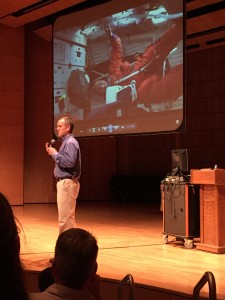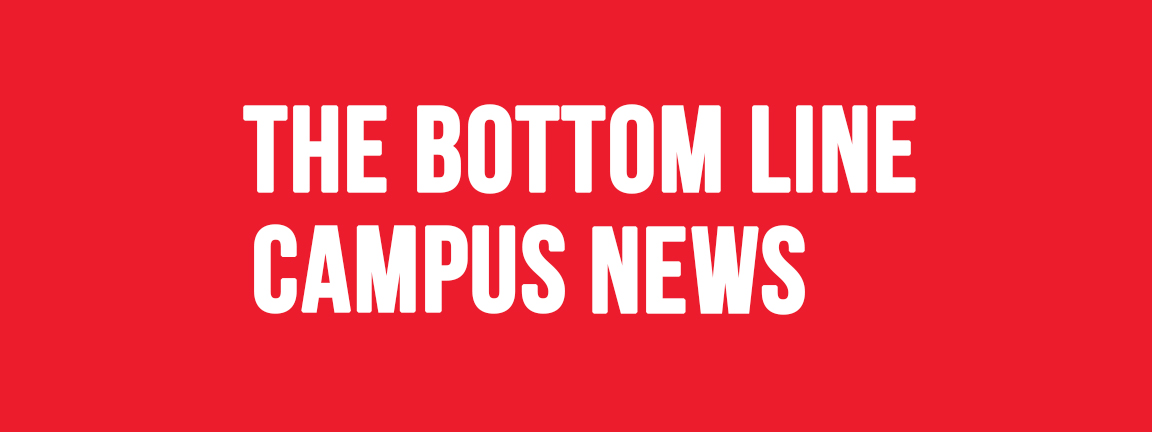Astronaut Ricky Arnold Pays Visit to Alma Mater

On Thursday, Nov. 11, 2016, Frostburg State University was lucky enough to host one of its alumnae, astronaut Ricky Arnold. He graduated from FSU in 1985 with a Bachelor of Science.
Arnold came to speak to Frostburg State students and the Frostburg community about his experience aboard the space shuttle Discovery to the International Space Station (ISS). He is a native of Maryland, and after graduating from FSU he then went on to get his masters at the University of Maryland Center for Environmental Science. While he was getting his master’s degree he was full time middle school teacher. He completed his master’s degree in 1992.
After his masters degree, he continued his interest in oceanographic work. He went to the sea organization in Cape Cod, where they send undergraduates to sea for a semester. After participating in this program, Arnold went back to teaching all grades across the world.
Arnold then found the opportunity to apply for the astronaut corps at NASA. He was accepted in 2004. During his training, he completed safety courses, driving courses, field training, space walk safety, etc. Once he completed his training, his first task was living in aquarius (living under water). In 2009 he then had his first opportunity to go to space. He would be on board the shuttle Discovery, with the destination of the ISS.
As Arnold made his presentation, he spoke to the audience and presented home video footage of his trip to the ISS. The footage that he brought with him starts at the very beginning of his trip: suiting up to board the Discovery, all the way to the end of his journey with the landing.
When he first arrived at NASA, he completed about two years of initial training that encompassed what he would be doing on his mission. His mission was to bring up the last set of solar rays for the ISS. This brought the crew up from three people to six on board. “The ISS is primarily a science platform. We have science going on everyday of the week there” according to Arnold. Arnold says that the research going on at the ISS will fundamentally change things here on Earth; there is a lot of promise in the science world.
“You ride out in a van, and you quickly realize you are heading out to basically a bomb site,” says Arnold. You start out with a whole army of people to help suit you up, but by the time you get out to the rocket there are only a handful of people with you, and then you are strapping-in to the rocket. Arnold described it as “sitting on your back, your feet in the air, and then you get the call.”
Arnold then went on to describe the liftoff procedures, “you don’t even feel like you are moving.” About two minutes out, the side rockets burn out and drop off. After eight and half minutes, you finish all of the fuel in the external tank, then the explosive bolts release the shuttle from the tank, “We are in space,” says Arnold. The most dangerous part of the entire mission was the launch.
He said, “It is absolutely magnificent looking back at our home planet.”
Once the shuttle made it into orbit, Arnold said that the crew had to work to convert the shuttle into a living and working space. Everything happens on the shuttle, so the shuttle has to “do it all.”
Arnold said the most interesting concept to him was as they were pulling up to the ISS he realized, “I have friends and colleagues on board. I am basically dropping in on their house to visit.”
He then elaborated on the layout of the ISS. There are several labs and living spaces for different countries, including the U.S., Russia, and France. The ISS is as big as a football field if you take it apart. Arnold said, “What’s remarkable, to me anyway, it was made by American companies, Italian companies, German companies, Russian companies, French companies, Japanese companies, and so many more.”
Arnold was fortunate enough to participate in space walks. They get into their space suits, which Arnold says, “its like getting into a turtle shell made out of fiberglass.” His spacewalks lasted for six and half hours, and he did them twice.
“I encourage you to follow the missions, and [to] let NASA know that you are interested in what they do,” said Arnold as he concluded is presentation.
When asked if he had any advice for students and success he said, “Don’t ignore forks in the road. A lot of people have a tendency to not even realize that there is a fork in the road. Always be willing to take a chance. Life is going to present a lot of opportunities, don’t be afraid to take them.”
There was a great turn out in the audience, as the PAC Pealer Recital Hall was almost full. Sophomore Ben Childs said about the event, “It showed me how much work being an astronaut is. It was cool getting inside the life of someone who does that.” Olivia Young came from Potomac State and said, “It reiterates how awesome space science is, and how important it is to our country as a whole. It really motivated me.”
President Nowacyzk was asked what it meant for him to have someone like Ricky Arnold come back to FSU to speak and he said, “This is indication of the successes of our alumni. It is great to have an astronaut who is an alumnus, but the enthusiasm he brought, and the interest in science was amazing. I took away that he is one of us, but that FSU has made such a difference in his life.”
Ricky Arnold hopes to return to space as the ISS has received funding to continue research to 2024. He currently serves as the branch chief at NASA responsible for planning and executing space walks, and also space station robotics operations.



